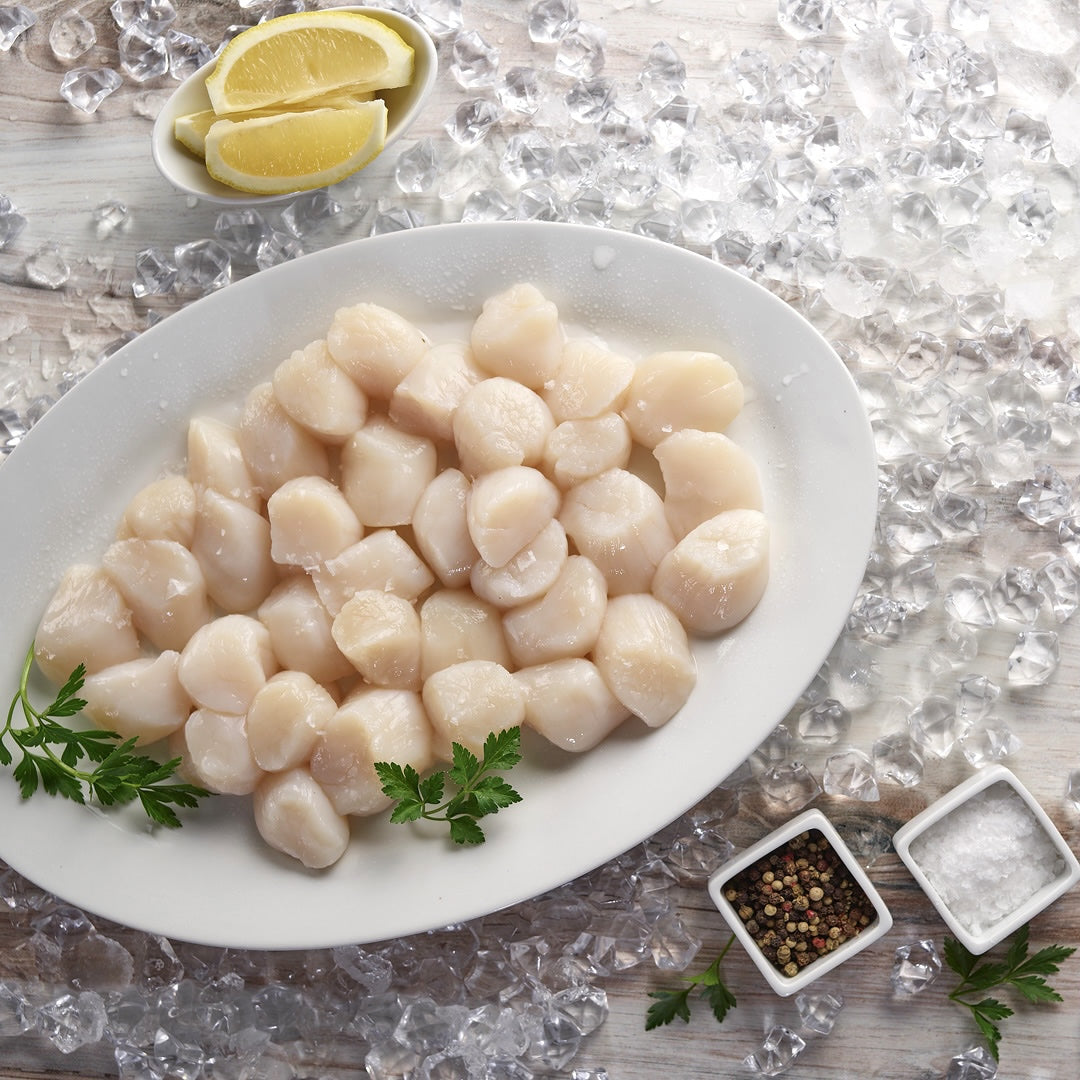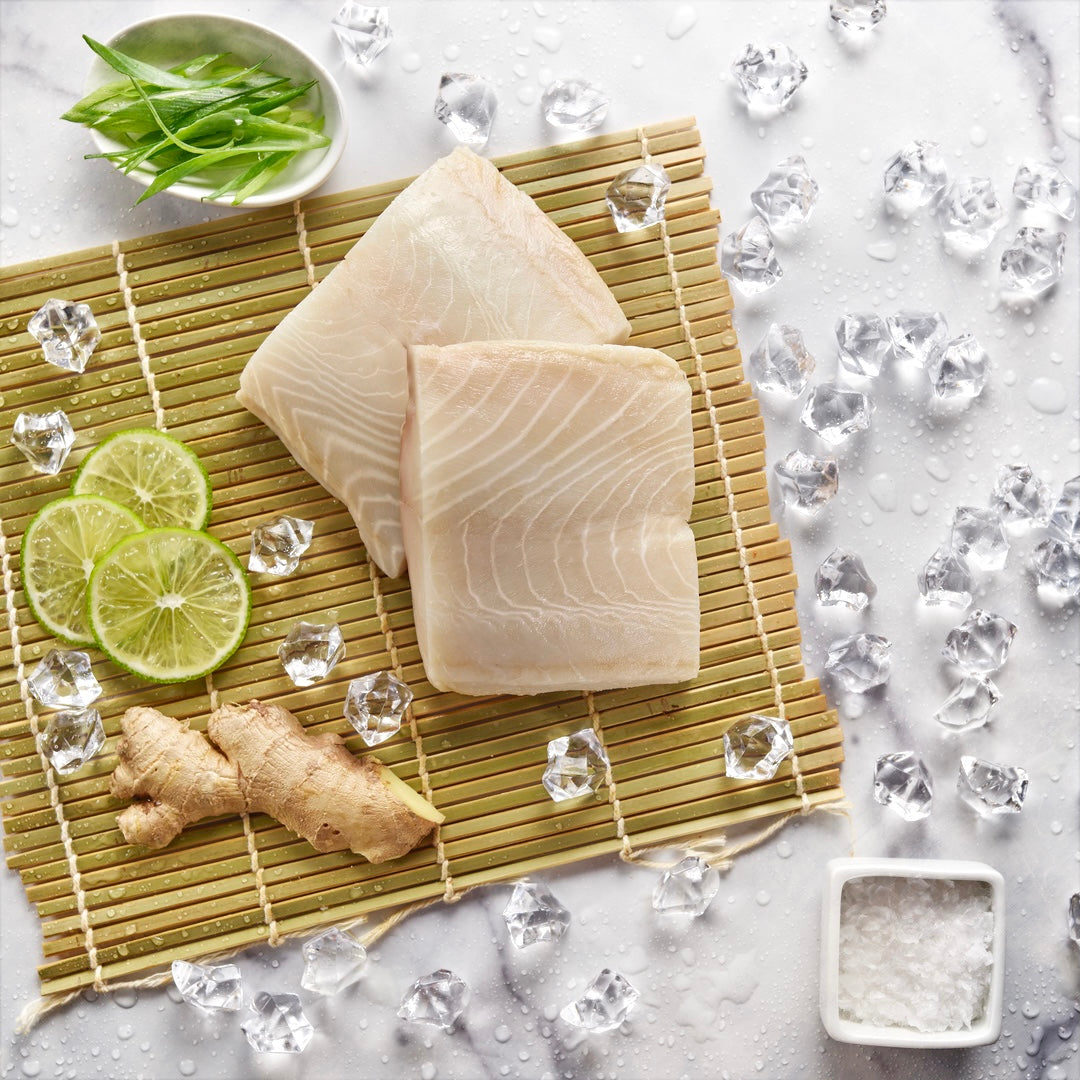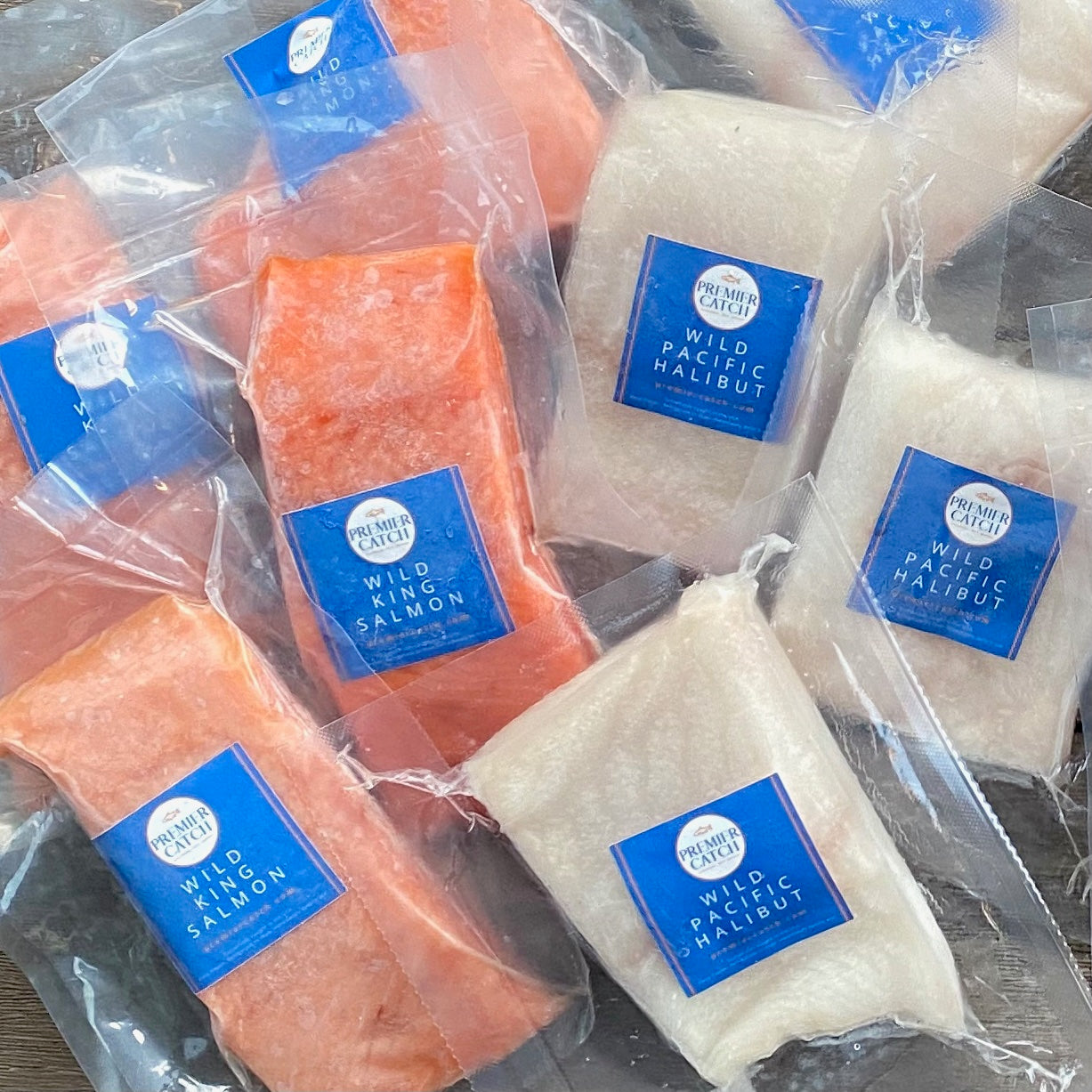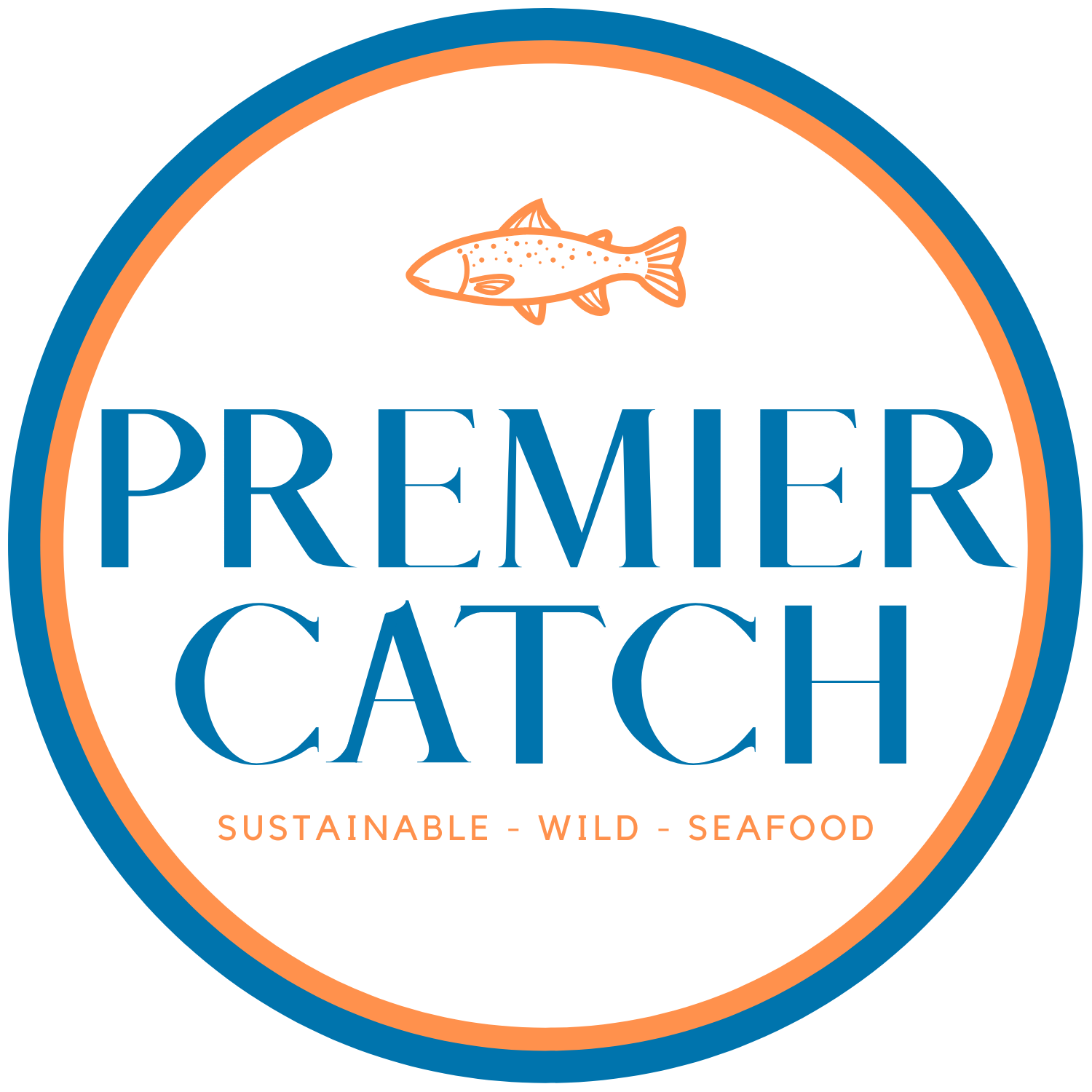
Seafood Thawing and Cooking Guide
Whether you recently started cooking or are a proud home-chef, cooking seafood incites questions from all types of cooks. Depending on the type of seafood and cooking method used, the timing and temperature varies for each species.
But cooking seafood is a lot easier than you might think. Follow our thawing and cooking guide below for seafood that bursts with flavor and has a perfect texture no matter what cooking method you use. And if any other questions pop up, email us at info@premiercatch.com or send us a message on social media.
THAWING:
Our seafood should be kept frozen until ready for preparation. Items can be stored frozen for up to 12 months, but are best if consumed within 6 months of purchase.
The best way to thaw our seafood is to remove the product from the original packaging, place it in a plastic bag or on a plate, and allow it to thaw in the refrigerator for about 6 hours, or overnight. If you require faster thawing, we recommend placing the product into a non-vacuum sealed bag and placing it in cool water for around thirty minutes to an hour.
We suggest preparing and consuming within 2 to 3 days of thawing.
GRILL:
|
Species |
Time & Temp |
|
Salmon |
6 to 8 minutes per side. Medium to medium high heat. |
|
Halibut |
5 to 6 minutes per side. Medium to medium high heat. |
|
Cod |
5 to 6 minutes per side. Medium to medium high heat. |
|
Black Cod |
5 to 6 minutes per side. Medium to high heat. (You can’t overcook it!) |
|
Scallops |
3 to 4 minutes per side. Medium to high heat. |
|
Spot Prawns |
3 to 4 minutes per side. Medium to high heat. |
OVEN:
|
Species |
Time & Temp |
|
Salmon |
10 to 12 minutes at 450 degrees. |
|
Halibut |
20 minutes at 375 degrees. |
|
Cod |
10 to 12 minutes at 400 degrees. |
|
Black Cod |
12 to 15 minutes at 400 degrees. (You can’t overcook it!) |
|
Spot Prawns |
5 minutes per side at 400 degrees. |
STOVETOP:
|
Species |
Time & Temp |
|
Salmon |
3 to 4 minutes per side, starting skin side up. Medium to medium high heat. |
|
Halibut |
3 to 4 minutes per side on medium high heat. |
|
Cod |
3 to 4 minutes per side on medium high heat. |
|
Black Cod |
3-4 minutes per side, starting skin side up. Medium high heat. (You can’t overcook it!) |
|
Scallops |
3 to 4 minutes per side. Medium to high heat. |
|
Spot Prawns |
3 to 4 minutes per side. Medium to high heat. |
AIR FRYER:
|
Species |
Time & Temp |
|
Salmon |
6-7 minutes at 400 degrees. |
|
Frozen Salmon |
14 minutes at 400 degrees. |
|
Halibut |
10 to 12 minutes at 375 degrees. |
|
Cod |
10 to 12 minutes at 400 degrees. |
|
Black Cod |
12 to 15 minutes at 400 degrees. (You can’t overcook it!) |
|
Scallops |
3 to 4 minutes per side at 400 degrees. |
|
Spot Prawns |
3 to 4 minutes per side. Medium to high heat. |
Best Internal Temperatures:
| Salmon |
100°F seared, warm center 125°F medium-rare 135°F medium |
|
Halibut |
130°F should be opaque and easily flake apart when cut into. |
|
Cod |
135°F should be opaque and easily flake apart when cut into. |
|
Black Cod |
135F to 140°F impossible to overcook sablefish! |
|
Scallops |
120-130°F |
|
Spot Prawns |
120°F |
Cooking FAQ:
1. How do I know when my fish is cooked?
Salmon: Salmon is best when it is medium-rare. You can use a knife to cut into your filet and it should flake apart. Fish will continue to cook after it’s removed from heat so it’s better to take it off earlier rather than later.
Cod and Halibut: Cod typically cooks quicker than halibut because it is a slightly leaner species. White fish will turn opaque in color and should flake apart. Both cod and halibut will continue to cook after they are removed from heat.
Black Cod/ Sablefish: Due to its extremely high oil content, sablefish cannot be overcooked. When “done,” sablefish will caramelize and flake apart.
Scallops & Spot Prawns: Scallops and Spot Prawns are the quickest to cook and easiest to overcook so watch them carefully. Scallops will become opaque and golden while spot prawns will become opaque and the color will depend on the marinade used.
2. Do I need to heat my crab?
Our king crab and Dungeness crab are both fully cooked. You may simply thaw and eat it! We love it served chilled or at room temperature. If you wish, you may warm the crab before serving, however, be careful not to overheat it as the meat can become tough. To warm, we recommend you steam it for four minutes or bake in a 400 degree oven for three or four minutes.
3. Can I cook my fish from frozen?
Yes! We recommend air-frying frozen salmon for 14 minutes at 400
degrees. Here’s our favorite from-frozen recipe from Premier Catch Athlete Olivia Moultrie: Maple-Glazed Salmon and Coconut Rice.
4. Do sockeye and king salmon cook at the same rate?
Depending on the thickness of the filet, King Salmon often takes slightly longer to cook than sockeye. We recommend using the guide to start, using a knife to check the middle of the fish, and then cooking for longer if that is your preference.
5. Can I eat seafood raw?
Yes! Our Sockeye Salmon, King Salmon, and Scallops are all sashimi grade. We
recommend making salmon poke bowls with our sockeye salmon and/ or
homemade sushi.
6. Is ceviche raw or cooked?
Ceviche does not use heat but citric acid in lime and lemon juice cooks the fish
through a process called denaturation which is the same chemical process as cooking with heat. For our Halibut Ceviche recipe and directions, click here.
7. Can I eat salmon skin?
Yes! There are rich omega-3’s found in the skin of the salmon, and when you
leave the salmon skin on while cooking, it helps lock in the moisture of the salmon. One of the best ways to try eating salmon skin specifically is by making "Salmon Skin Bacon."
Email us with any additional questions at info@premiercatch.com or send us a message on social media!
Let's Hook Up!
Sign up for exclusive offers, free recipes & new product releases. 10% off when you join!
































